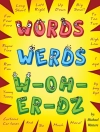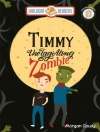‘Clearly demonstrates how to design rubrics for math, a content area that desperately needs support. The use of rubrics combined with performance tasks helps educators teach math at a higher, more engaging level. A must-have book for all educators seeking to build a strong thinking-based math program.’
—Lee Ann Cervini, Principal, Holley Elementary School, NY
‘Makes a distinct contribution to the field. Not only does the text clearly explain how to create rubrics and performance tasks in a step-by-step manner, each chapter also provides an example for immediate use in the classroom.’
—Marcia Carlson, Sixth-Grade Teacher, Crestview Elementary School, Clive, IA
Enhance students′ understanding of math concepts through rubrics and hands-on learning!
Teaching mathematics in today′s world requires practices and procedures integrated with performance tasks that actively involve students. In this second edition of Designing Rubrics for Mathematics, Eileen Depka clarifies the purpose of rubrics in math instruction and illustrates the relationship between assessment, rubrics, and the National Council of Teachers of Mathematics′ Principles and Standards for School Mathematics (2000).
Each chapter in this research-based updated edition offers easy-to-use strategies, suggestions, creative sample problems, and tasks to engage students in hands-on learning while allowing them to have fun in the process. With two new chapters focused on communication to deepen students′ understanding of math concepts and using rubric data to improve instruction, this resource provides teachers with:
- Reflective activities to use with students for metacognitive processing
- Strategies for creating standards-linked rubrics, plus samples
- Tips for differentiating performance tasks
- How-to′s for student-created rubrics
- Internet resource links for rubric development, mathematical focal points, and standards
Designing Assessment for Mathematics, Second Edition, demonstrates how to drive instruction and successfully boost achievement levels by providing students with experiences that impact their learning and performance.
Cuprins
Acknowledgments
About the Author
Introduction
The State of Mathematics
About This Book
Chapter 1. Using Rubrics in Mathematics
The Rubric
Why Use Rubrics in Mathematics?
Rubric/Mathematics Application: You′re Right on Target!
In Summary
Chapter 2. The Relationship Between Mathematics Standards and Rubrics
The Importance of Standards
Mathematics Standards and Rubrics
Rubric/Mathematics Application: How Negative Are My Temperatures?
In Summary
Chapter 3. Performance Tasks and Rubrics
Why Use Performance Tasks?
Characteristics of Performance Tasks
Creating the Performance Task
Rubric/Mathematics Application: Let′s Go Shopping!
In Summary
Chapter 4. Developing the Rubric From a Checklist
The Checklist
The Transition from Checklist to Rubric
Summary of Steps for Developing a Rubric
Rubric/Mathematics Application: What′s My Area?
In Summary
Chapter 5. Weighted Rubrics
The Purpose of Weighted Rubrics
Using Technology in Rubric Development
Rubric/Mathematics Application: Discoveries in Rainbow Candy Land
In Summary
Chapter 6. Student-Created Rubrics
Using Student-Created Rubrics
The Process
Rubric/Mathematics Application: I′m Not Just Average!
In Summary
Chapter 7. Teacher-Made Tests and Rubrics
Using Teacher-Made Tests
Creating a Teacher-Made Test
Rubric/Mathematics Application: Finding LCM and GCF
In Summary
Chapter 8. Using Rubric Data
Analyzing Data
Individual Graphs
Group and Summary Information
Student Comparisons
Rubric/Mathematics Application: The Garden
In Summary
Chapter 9. Mathematics and Communication
Mathematical Vocabulary
Communication
Feedback
Reflection
Mathematics Application: Sales Tax Task
In Summary
Appendix 1: Additional Rubric/Mathematics Application Projects
Project 1 Overview: Measurement and Statistics
Project 2 Overview: Symmetry and Area
Project 3 Overview: Standard Measurement
Project 4 Overview: Unit Pricing
Project 5 Overview: Complementary and Supplementary Angles
Appendix 2: Turning a 4-Point Rubric Score Into a Letter Grade
Bibliography
Index
Despre autor
Dr. Depka is an educational consultant and author. Eileen has supervised and coordinated curriculum, instruction, assessment, special education, educational technology, and continuous improvement efforts. In addition, she provides professional development for K–12 administrators and teachers. Eileen has taught all subjects at the elementary and middle levels, and she has also taught graduate-level courses. As a consultant, she has worked with schools and districts across the country, focusing on topics including assessment, grading and reporting, portfolio development, rubrics, continuous improvement, and data collection. Since 1998, Eileen has presented at the local, state, and national levels. Eileen has been featured in and consulted on educational videos, and she has written online courses. She is the author of Focus on Homework, Designing Rubrics for Mathematics, Designing Assessment for Mathematics, and The Data Guidebook for Teachers and Leaders: Tools for Continuous Improvement. She is the co-author of Formative Assessment in the RTI Framework and a contributing author to Data Enhanced Leadership. Her newest book concentrating on questioning strategies will be available later this year through Solution-Tree press. Eileen earned a bachelor’s degree in elementary education from the University of Wisconsin. Her Master’s and Doctoral degrees were earned from Cardinal Stritch University. Eileen is passionate about student achievement and is driven by the belief that all children can achieve academic success. Her goal is to work with teachers and administrators to collectively increase expertise and add to strategy banks used in educational settings in an effort to impact student achievement.












